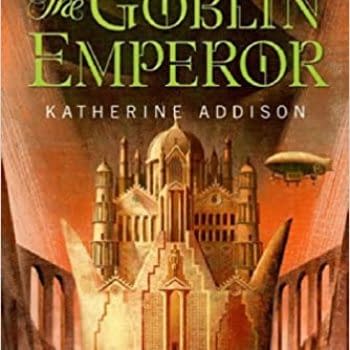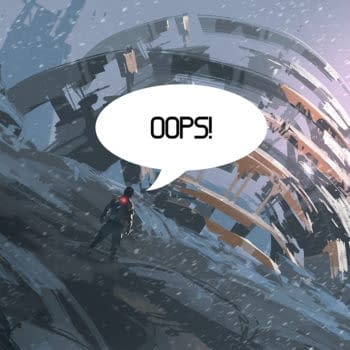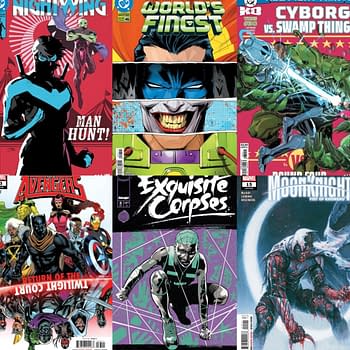Posted in: Comics | Tagged: Bob Hall, Carl Zimmer, carnival of contagion, educational comic, HRL, John West, Judy Diamond, measles, unicorn barf
Carnival Of Contagion Review: An Interesting, If Unpleasant, Sensory Experience
Carnival of Contagion by Bob Hall, John West, and Judy Diamond with an accompanying essay by Carl Zimmer is a unique experience to read. Depicting a fever dream of unvaccinated teens, the book anthropomorphizes the measles virus as an end-rhyme-speaking, dragon-riding carnival barker, with their only aid as Dr. Peter Panum and his Mary Poppins umbrella. The coloring is done in garish hues of violet, green, and red, with an infusion of contrasting colorway dots. The epilogue essay explains how the measles virus works, along with herd immunity and the dangers of the virus to a person.
Reading the book was an unpleasant sensory experience. The excessive use of high-contrast opposing colors gave me the queasy feeling of pre-migraine aura, and there was little sense of depth to the art. The tale's use of metaphor and end-rhyme seemed a bit heavy-handed, especially when combined with scientific factlets, and the choice of what they decided to emphasize as a symptoms and possible complications baffled me at times. Encephalitis is barely a footnote, the hallucinations caused by brain swelling are a joke, and coughing and fever get a ton of page space. And it treats the people who are anti-vaccination as if they are total idiots — which is not a productive way to convince people of anything. Insulting people's fears doesn't inspire them to be brave and own up to them; it makes them defensive.
On the whole, between the rhyming talk of the measles virus as a carnival barker, the unnatural colors and flatness of the panels, and the idea of the story as a shared fever dream, Carnival of Contagion made me feel like it played down the seriousness of the illness and made the story hard to follow. It wasn't a good reading experience for me, and I likely wouldn't share it with my peers.






![[REVIEW] Fallout 76 Glitch Makes My Clothes Fall Off](https://mlpnk72yciwc.i.optimole.com/cqhiHLc.IIZS~2ef73/w:350/h:350/q:75/rt:fill/g:ce/https://bleedingcool.com/wp-content/uploads/2018/11/2018-11-22-350x350.jpg)









